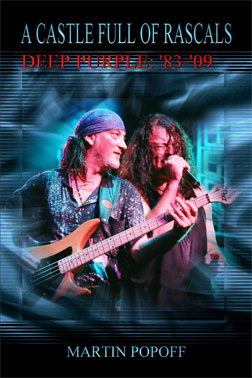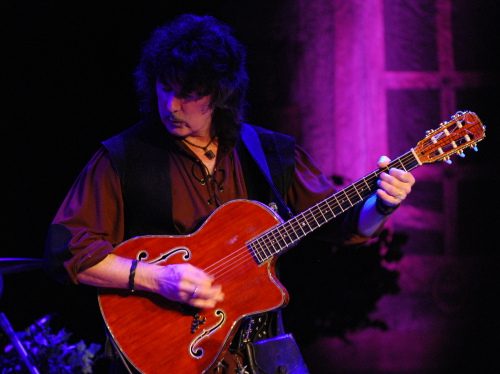It’s Bombay calling again and it says that nothing is new under the moon.
Many years ago there was a Canadian band called Warpig. Their music sounded clearly inspired by Deep Purple and Uriah Heep. They even shared a sound engineer with Purple — Tom Brennand:
It was during a concert by Deep Purple, that keyboardist, Jon Lord, asked if there was anyone in the audience that could rectify the feedback problem during the bands intro. Tom was pushed up and introduced, rectified the problems and was asked to continue on the tour, but due to commitments, that was impossible. Deep Purple, the band, hired him as their sound and recording engineer at every available opportunity. During this period some of the notables with whom tom worked, were Anne Murray, Gordon Lightfoot, Deep Purple, Bee Gee’s, etc.
But check out their track Rock Star — it was recorded in 1970 and thus predates Fireball. Interesting, eh? 😉
Here’s another interesting thing. This is a song called Maria Moite (Maria Quiet) performed by Brazilian jazz singer Astrud Gilberto (of the Girl from Ipanema fame). You might recognize the tune as the jazzy intro the band does for SOTW from time to time, most notably in Montreux 2006:
http://www.youtube.com/watch?v=owOCJTDfJKs
What’s even more interesting, the above recording first appeared on the album Look to the Rainbow Astrud Gilberto did with Gil Evans, which was released back in 1965 or 1966. Very interesting. 😉 😉
I’m pretty sure Jon Lord, being jazz aficionado that he is, was aware of Gil Evans’ work and it is not inconceivable to imagine him jamming around the riff at one of the Purple’s sessions. And perhaps then the guitar player went thinking “Hmm… I wonder how it sounds in fourths”.
The point I want to make here is not about accusations of plagiarism. It is about creative process. All the musicians, writers, artists, creators of any kind stand on the shoulders of giants. They constantly reinterpret what was done previously and do it their own way.
Your hear/read/see (sometimes even smell or taste) and idea and it gets the train of thought rolling. Then you seemingly forget about it. If it’s not your mind every day it does not mean that the brain has stopped working on that idea, subconsciously. Then, many moons or years later, one of those heureka moments happen. The idea was thoroughly processed and surfaces as if it’s your own. Sometimes we remember what exactly got that train of thought rolling in the first place, sometimes we do not. And let’s not get too harsh on those moments when someone does not. That’s how creative process works.
But of course, in the end, credit should be given where credit is due. Whenever possible.
Ah, and by the way, you can buy Astrud’s album or songs from it at your nearest Amazon store:






It’s full of very smooth bossa-nova. And if you like your jazz a little edgier, I can recommend her work with Stan Getz.
Thanks to Andrey Gusenkov and Dan for bringing Warpig to your attention. Also thanks to whoever brought Maria Moite to my attention many years ago.
![[hand]](/hs-pics/portraits/hands/glover1.jpg)
![[face]](/hs-pics/portraits/faces/airey3.jpg)











 Unauthorized copying, while sometimes necessary, is never as good as the real thing
Unauthorized copying, while sometimes necessary, is never as good as the real thing